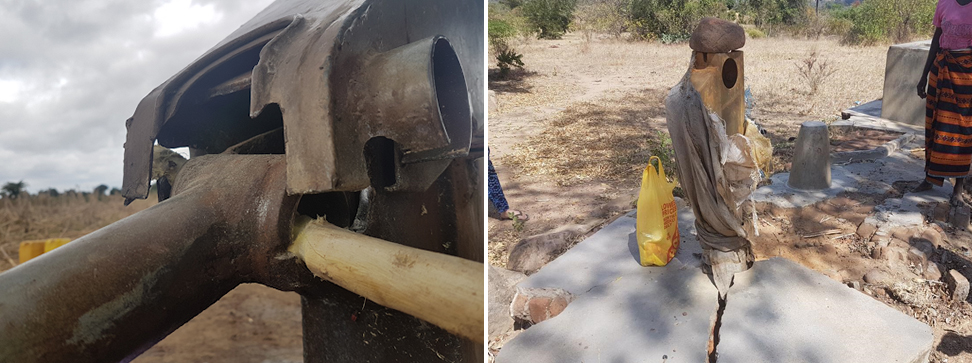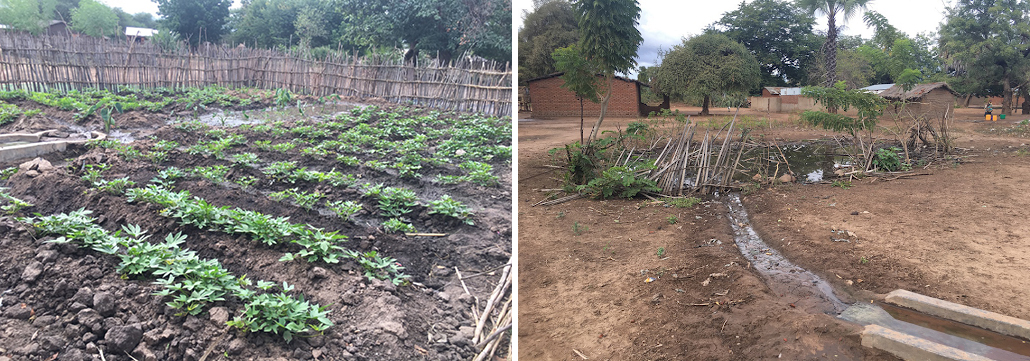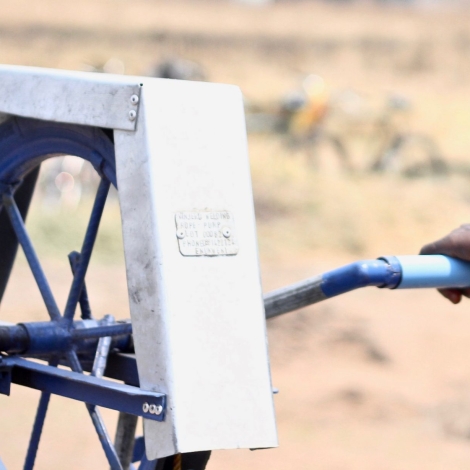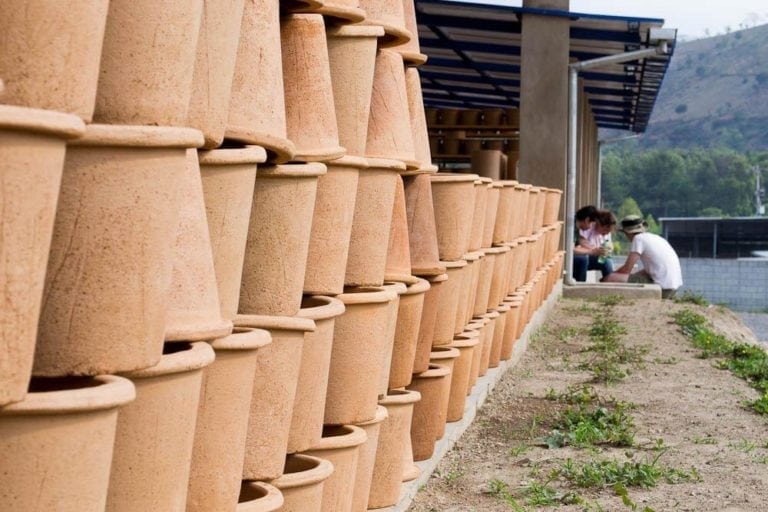There is a commonly cited statistic that “between 1990 and 2015, the proportion of the global population using an improved drinking water source has increased from 76% to 90%.” But does an increase in drinking water access translate to sustainable drinking water access in rural communities? Short answer, no. During my Ph.D. research in Malawi, I looked into the increase of water access and the sustainability of rural handpumps. Salty water stood out as a water quality problem, first revealed through comments by people living in rural Chikwawa, Southern Malawi, then verified through testing. The following example highlights my experience and observations of the impact that salty water can have on the livelihoods of communities.
Takeaways
- Handpumps have played a fundamental role in increasing access to drinking water, but they may inadvertently burden communities by requiring maintenance that’s not suitable or acceptable in the context.
- Careful consideration of water quality guidelines is needed when installing new water access. Water that may technically test within a country’s guidelines can still be unacceptable to the underserved community. This has a notable impact on the long-term sustainability of water access.
- Sustainable access is more than solely providing technology. Appropriate siting and long-term planning for boreholes is essential to ensure reliable services producing safe, sufficient and acceptable water quality.
- Boreholes with handpumps may not be the most appropriate technology for the local context in areas of highly saline groundwater. Other technologies that access less saline source water may be more feasible and sustainable to deliver water to the community, such as gravity networks or tap and piped systems.
- Water is a fundamental human right and essential for livelihoods. The impact to livelihoods in areas of high salinity must be considered. Particularly how it affects source use behaviour (opting for surface water) and irrigation for agriculture (saline resilient crops).
Overview of the problem
Global develoment practitioners have focused on increasing drinking water access in their work to achieve the global goals over the last two decades, including the Millennium Development Goals (MDGs) and, more recently, the Sustainable Development Goals (SDGs). The global community recognized “the right of everyone to sufficient, safe, acceptable, physically accessible and affordable water for personal and domestic use,” and has worked to guarantee that right by increasing water access.
Handpumps in particular have played a fundamental role in increasing drinking water access to underserved communities. However, estimations during the MDG era suggest only two out of three handpumps were working at a given time, raising concerns about the lack of capacity, long-term maintenance planning and appropriate siting of water points to ensure acceptable water quality at the local level to sustain services once development practitioners and implementers are gone. Countries may also have their own criteria for what counts as a good and acceptable water source, such as the case of saline water.
Monitoring water quality under different standards may unintentionally hide the extent of the problem. Levels of total dissolved solids (TDS) is one method of measuring the salinity of water sources. In Malawi, a borehole that produces TDS 2000 mg/L or more is classed as a “defective borehole.” This should be sealed off and reported to avoid tampering with the groundwater contaminating other sources in the area, and so no other “defective boreholes” can be installed in the area. The World Health Organisation (WHO) recommends much lower levels of TDS. Where good quality is considered around 600 mg/L, and drinking water becomes significantly and increasingly unpalatable at TDS levels greater than about 1000 mg/L.
“Unpalatable” at levels above 1000 mg/L under the WHO, compared to “supplies suitable for use” at 2000 mg/L in Malawi is a significant difference and raises many concerns. For example, a borehole with TDS levels between 1000 and 2000 mg/L is deemed suitable in Malawi and contributes towards improved water access in the country. However, the increasingly unpalatable levels of TDS may lead to low levels of service and potential abandonment by communities. Investment is therefore lost, and progression towards increasing improved access is exaggerated. These water points become neither viable nor sustainable to maintain serviceability due to the unacceptable water quality produced by the borehole.
Example from Southern Malawi – Impact of salinity to communities
Salinity is a known issue associated with groundwater in Southern Malawi, with many communities experiencing high TDS levels. The majority of community water points I visited as part of my research were suitable under Malawian TDS guidelines, but were unsuitable when compared to WHO guidelines (with very few under the 600 mg/L “good quality” description).
Broken handpumps and surface water use
Would you want to spend time and money on maintaining a water that produced salty water? This is the expectation on rural communities once improved access has been implemented. The challenges and sustainability associated with community managed handpumps are well established, however, the acceptability of water quality further conflates the issue. Users that find the water quality unacceptable are less likely to contribute the maintenance and financial requirements for continued serviceability. The handpump can then fall into disrepair or become abandoned. Water points that produce salty water can be unacceptable to the water users that contribute to the continued sustainability of water access.

Broken (left) and abandoned (right) handpumps in saline areas of Chikwawa, Malawi. Photos by the author
Water users may also prefer other handpumps further away or unimproved source use such as surface water, rather than the salty water points. This poses a risk to health when surface water sources, such as the nearby Mwanza river, are used instead of another improved source. Overall, the initial benefits and investment of increasing water access are therefore lost.
Impacts to irrigation
In some parts of Malawi, local scale agriculture, called permaculture, is practiced. Permaculture gardens utilise water from handpumps by irrigating crop beds planted at the end of the civil works soakaway. This provides a solution to food security and overspill-wasted water when fetching water from handpumps. It also provides a source of income as communities can sell the crops to maintain both permaculture gardens and handpumps. However, salty water is detrimental to permaculture gardens and can prevent crop growth, impacting food and financial security.

Irrigating crops with saline water damages yields. The permaculture on the left is irrigated with non-saline water, while the plot on the right is irrigated with saline water. Photos by the author.
About the Author
Jonathan was an E4C Research Fellow in 2020, hails from Glasgow, Scotland (UK) and recently completed his Ph.D. in Civil and Environmental Engineering at the University of Strathclyde. The research was part of the wider Scottish Government Climate Justice Fund Water Futures Programme, working in partnership with the Government of Malawi, to evaluate the sustainability of rural water supplies. His research works to investigate the sustainability burden on the decentralised management of rural water supply in Malawi. This addresses the need to move beyond coverage as the metric for success in the global goals and national policies. He is currently a Research Associate at the University of Strathclyde, undertaking research of sustainable urban drainage (SUDs) as part of the Glasgow Avenues Programme.

